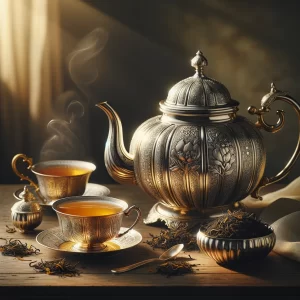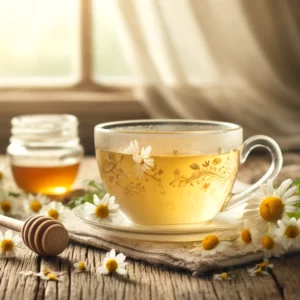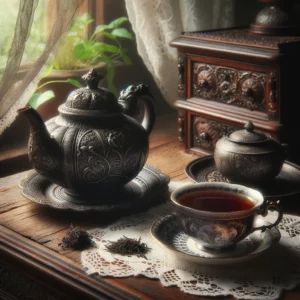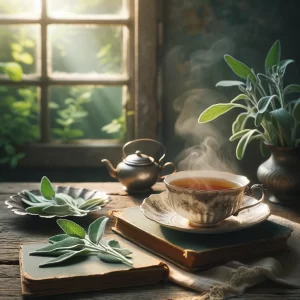Discover the rich history, unique cultivation practices, and delightful flavors of Darjeeling Black Tea, a gem in the crown of teas. This comprehensive guide will take you on a journey through the misty hills of Darjeeling, exploring every aspect of this beloved brew.
Table of Contents
- Introduction
- Unveiling the Charm of Darjeeling Black Tea
- From Leaf to Luxurious Brew
- Savoring Darjeeling Black Tea
- Darjeeling Black Tea’s Cultural and Culinary Journey
- Safeguarding the Heritage of Darjeeling Black Tea
- Conclusion
- Try Darjeeling Black Tea
Introduction
Darjeeling Black Tea, commonly called the “Champagne of Teas,” holds a prestigious position in the tea world. This guide aims to unravel the layers of this exquisite tea, from its origins to the perfect brew, ensuring tea enthusiasts can fully appreciate its complexity and elegance.
Unveiling the Charm of Darjeeling Black Tea
The Roots and Evolution of Darjeeling Tea
The journey of Darjeeling tea began in the 19th century when the British colonial administration initiated tea cultivation in the region. The unique climate and terrain of the Darjeeling Himalayas proved to be ideal for growing tea plants that produced aromatic and flavorful teas.
What Sets Darjeeling Black Tea Apart
What makes Darjeeling Black Tea stand out is its muscatel flavor, a result of the combination of cool air, high altitude, and unique soil conditions. Each tea estate in Darjeeling produces teas with distinct flavors, making every cup a new experience.
From Leaf to Luxurious Brew
The Art of Cultivating Darjeeling Tea
The misty hills and cool climate of Darjeeling contribute significantly to the tea’s unique flavor profile. Tea bushes thrive on the steep slopes, which are irrigated by natural mountain springs.
Crafting Darjeeling Black Tea
The tea leaves undergo several steps – withering, rolling, oxidation, and drying – each carefully controlled to develop Darjeeling’s signature flavor.
Savoring Darjeeling Black Tea
Decoding the Flavor Spectrum
Darjeeling teas are classified by their harvest period or “flush.” The first flush teas are light and aromatic, the second flush brings the famous muscatel flavor, and the autumnal flush offers a richer, fuller body.
Brewing the Quintessential Cup
For the best cup of Darjeeling tea, use water just off the boil (around 90-95°C) and steep for 3-5 minutes. Adjust according to taste.
Darjeeling Black Tea’s Cultural and Culinary Journey
Darjeeling Tea in Indian Tradition
In India, Darjeeling tea is more than just a beverage; it’s a part of daily life and special occasions. It’s often served to guests as a gesture of hospitality and enjoyed at family gatherings.
Culinary Adventures with Darjeeling Tea
Innovative chefs have begun incorporating Darjeeling tea into their recipes, creating dishes like tea-infused chocolates and Darjeeling marinated meats.
Safeguarding the Heritage of Darjeeling Black Tea
Navigating Challenges in Darjeeling Tea Production
Climate change and economic pressures pose significant threats to the traditional ways of producing Darjeeling tea. Maintaining quality while ensuring the sustainability of the tea gardens is a growing concern.
Championing Sustainable Practices
Tea lovers can help by purchasing teas from estates that practice sustainable farming and fair labor practices. Supporting small-scale farmers and ethical trade initiatives can make a significant difference in preserving the heritage of Darjeeling tea.
Conclusion
Darjeeling Black Tea is a testament to the rich history and craftsmanship of the Darjeeling region. Its unique flavor profile, shaped by the terroir and the meticulous processing methods, offers a luxurious experience for tea lovers around the world.
Try Darjeeling Black Tea
“As an Amazon Associate I earn from qualifying purchases.”
[azonpress template=”grid” asin=”B000GG0BM0,B000MNB072,B00F9WN94S,B01D1OWC9S,B000F4F95M,B01JAMJIVU”]



